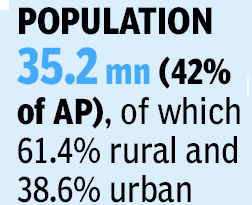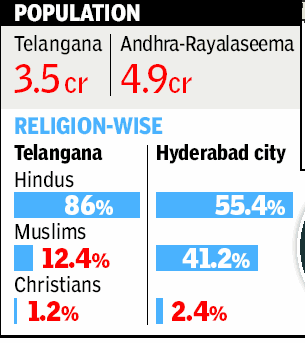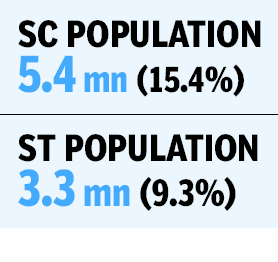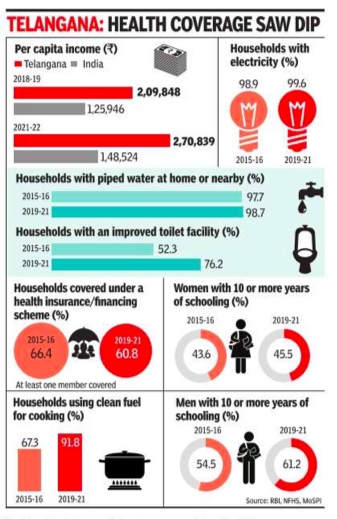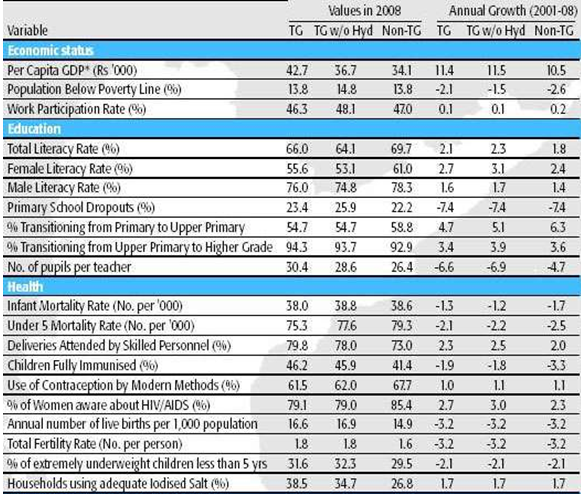Telangana
This is a collection of articles archived for the excellence of their content. Readers will be able to edit existing articles and post new articles directly |
The Times of India 2013/07/31 [1] [2] [3] Ch Sushil Rao,TNN | Feb 22, 2014
Contents |
The 2nd June 2014: Telangana is born
On June 2, 2014 Telangana formally came into existence. K Chandrasekhar Rao was designated to the state's first chief minister.
Telangana became the 29th state of India. Hyderabad is to be common capital for 10 years
1953-2014: The road to Telangana
15 facts you need to know about Telangana The Times of India TNN | Jun 2, 2014
NEW DELHI: On Monday, Jun 2, 2014, India's 29th state was born. For the first time — outside the Hindi- and Bengali-speaking areas — two states speaking the same language have been created. Both Telangana and Andhra Pradesh, the two successor states to unified Andhra Pradesh that came into existence on Monday, swear by Telugu.
As K Chandrasekhar Rao of Telangana Rashtra Samithi and N Chandrababu Naidu of the TDP take the reins of office, they would do well to remember that instead of indulging in gimmickry, the best way to ensure they have a bright future is to provide it to the people of their states — both in rural and urban areas.
Here are 15 watershed moments that contributed to the recognition of Telangana as a separate state
1953: States Reorganization Committee advises against the immediate merger of Telangana with Andhra Pradesh.
November 25, 1955: Andhra assembly passes resolution to provide safeguards to Telangana.
November 1, 1956: Telangana merged with the Andhra state to form Andhra Pradesh.
1968-69: Massive revolt called Jai Telangana Movement launched by people in Telangana demanding a separate state.
January 1969: As conciliatory measure, the All-Party State Accord was signed. Indira Gandhi also announced packages for the region, styled an eight-point formula and a five-point formula. Court upholds the rule of job and educational quotas for Telangana. Then, the anti-Telangana stir was launched — the Jai Andhra Movement. It is important to note here that, Venkaiah Naidu and Chandrababu Naidu were in the forefront of the Jai Andhra stir. The Centre, post the stir, yielded and nullified almost all the safeguards that had been put in place.
1969-2000: During this period, various protests were organized by agitators — both pro- and anti-Telangana — which often took a bloody turn.
2001: In this year, KCR picked up the statehood for Telangana demand. He also walked out of Telegu Desam Party and launched the Telangana Rashtra Samithi. Sonia Gandhi, during this period, had written to the NDA government at the Centre to push for the creation of the separate state of Telangana.
2004: Congres and TRS enter into a poll alliance.
2006: Congres and TRS part ways when the demand for the separate state of Telangana is not met.
December 2009: UPA-II's home minister, Sushilkumar Shinde hints at the fact that the Centre is serious about the recognition of Telangana as a separate state. In this regard, the Srikrishna Committee is set up which had submitted its report in 2010.
December 2012: Home minister Sushilkumar Shinde announces that the decision regarding Telangana will be taken in a month.
July 30, 2013: Congres announces the formation of the separate state of Telangana. It is all set to become India's 29th state.
February 18, 2014: Telangana Bill is passed by voice amid major disruptions by MPs from Seemandhra.
June 2, 2014: Telangana formally comes into existence. K Chandrasekhar Rao takes oath as the state's first chief minister.
Countless deaths: The creation of the separate state of Telangana, after a mammoth struggle that spanned close to 60 years, also witnessed horrific incidents of violence throughout the once unified state of Andhra Pradesh. In 2010, it was reported that 73 students had committed suicide and 1,812 students attempted to take their own lives demanding that a separate state of Telangana be created. Also, during the 1969 Telangana Agitation, a crowd of over 1,000 agitators had tried to set fire to a sub-inspector's residence.
Prime Minister Narendra Modi also welcomed the formation of Telangana.
A history of the movement
PTI | Jul 30, 2013
NEW DELHI: Telangana is the 29th state of India comprising 10 districts with plenty of water and some other natural resources in a backward region lacking development that was at the heart of the separate state demand.
The jewel in the crown is the city of Hyderabad, which may for some time, at least 10 years to start with, be the joint capital for the rest of Andhra.
With a population of over 3.5 crore in 2013, the new state comprising mostly the areas of the princely Nizam state will have 17 Lok Sabha seats and 119 assembly seats.
The Telangana movement
On November 1, 1953 a separate Andhra state was carved out of the then Madras state. The demand at that time from the Telugus was that Madras (now Chennai) should go to Andhra state. That was not to be. The new Andhra state got Kurnool as the capital. The capital, however, was shifted to Hyderabad later.
Telangana protesters this time made it clear that they could not imagine Telangana without Hyderabad which was part of it for centuries.
The demand for a separate identity for Telangana is virtually as old as the state of Andhra Pradesh, which came into existence in November 1956 through the States Reorganisation Act.
The united Andhra Pradesh government’s website said: "Telangana agitation was started by the people of the region when they felt that Andhra leaders had flouted the Gentlemen's Agreement which facilitated the formation of Andhra Pradesh.
"In the beginning, the movement demanded the implementation of the safeguards agreed upon earlier, but later it wanted the separation of Telangana from Andhra Pradesh."
Disinclination in Delhi for sixty years
Protesters demanding Telangana did not get the needed support from Delhi for their demand for a separate state in the past. The then Prime Minister Jawaharlal Nehru understood the demand for a separate Telangana state but when it came to taking the decision, he took a step back. The agitation for a separate Telangana state intensified in 1969 and a few hundred people were killed in the agitation.
If Jawaharlal Nehru did not show interest in carving a separate Telangana state, neither did his daughter Indira Gandhi. Though the agitation intensified during her rule, Indira Gandhi as Prime Minister also made it clear that she was not in favour of a separate Telangana state.
Change of mind in Delhi
What she did not do, her daughter-in-law Sonia Gandhi has done for Telangana. Sonia Gandhi as UPA chairperson and as president of the Congres party lent support to the Telangana cause. It took some years for her to decide but decide she did, in favour of Telangana.
During the 2004 elections, Sonia Gandhi had shared the dais with Telangana Rashtra Samithi (TRS) leader K Chandrasekhara Rao saying that she understood the sentiments of the Telangana people. The 'understanding' did not go beyond that and there was no action then. Now, in 2014, the UPA government has granted Telangana.
In the 2010s, scores of youth committed suicide in the Telangana region. Protesters, who came under a common banner irrespective of their political affiliation, brought the state to a grinding halt on several occasions. The protests in Telangana were matched with protests from the Andhra and Rayalaseema regions but eventually, Parliament favoured a separate Telangana state. This, despite the assembly not favouring a division.
Territory
The new Telangana state comprises of the 10 districts of Hyderabad, Medak, Adilabad, Khammam, Karimnagar, Mahbubnagar, Nalgonda, Nizamabad, Rangareddy and Warangal.
According to the Backward Regions Grant Fund 2009-10, 13 districts in united Andhra Pradesh have been identified as being backward, of which nine are in Telangana.
Classified as a semi-arid region with a predominantly hot and dry climate, Telangana is not amongst the most fertile regions of the country.
Developmental indicators
2015-21
See graphic:
Developmental indicators, Telangana, 2015-22
Has Telangana govt got the emblem wrong?
The Times of India Bushra Baseerat
The Telangana emblem has the popular Kakatiya arch standing out in the circular emblem in green colour with an image of Charminar at the centre. It was designed by Laxman Alley , a popular artist from a village in Atmakur mandal of Nalgonda district.
The new Telangana emblem does not have the inscription of `Satyameva Jayate' (Truth alone triumphs) in Devanagari script below the profile of Emperor Ashoka's Lion Capital as it should be.
Instead, the said inscription figures at the bottom of the emblem far away from the Lion Capital, which some feel is objectionable and needs to be corrected immediately .
“The newly created Telangana emblem is wrong and a violation under the State Emblem of India (Prohibition of Improper Use) Act 2005. Violations of this act occur frequently but purely out of ignorance,“ said Haryana-based activist Naresh Kadyan, who lodged a complaint with the Ministry of Home Affairs on Tuesday .
The ministry has accepted the complaint and is `actively' reviewing it, he claimed. In fact, a memorandum issued by the Ministry of Home Affairs last year clearly states that the emblem of India is incomplete without the motto: “Satyameva Jayate inscribed below the profile of the Lion Capital. Incomplete display of the emblem is a violation of the State Emblem of India Act, 2005.
Telangana: Economy
T will rank high on GDP table: Srikrishna report
Subodh Ghildiyal | TNN
The Times of India 2013/07/31
New Delhi: Telangana will be an economically viable state, with or without Hyderabad. This was the opinion of the Srikrishna Commission, which studied the vexed issue of Telangana statehood and made a regionwise study of economic parameters in Andhra Pradesh before concluding the new state would be able to sustain itself economically.
The official study attested to the claims of viability made by T-proponents — the sheer size of Telangana with 10 districts and 17 Lok Sabha seats makes it an independent entity.
Telangana would rank 15th among 29 states in terms of GDP and would be above Chhattisgarh, Uttarakhand, Jharkhand, Himachal Pradesh, Goa and the north-eastern states. This is without the jewel in the crown, Hyderabad, which is an employment and investment hub.
The per capita income in Telangana is “a notch higher” than the national average while with Hyderabad, it would rank 13th in GSDP and also in per capita terms.
The statistics may not tell the complete, or real, story but they do point to the potential of the proposed state, a reason why the commission vouched for its viability.
The T-advocates have long said an even-handed treatment would help the state exploit its irrigation and power potential and help increase farm output as well as industrialization in the dry patch of land.
In fact, Srikrishna Commission debunked the claim of “backwardness” as a reason for statehood, demonstrating that Rayalaseema was the worst off among the three regions of the state. In fact, while Telangana has a long distance to cover, statistics show it is not unviable in terms of economic parameters.
Instead, the challenge before Telangana would be to remove intra-regional disparity. Backwardness across Telangana is about the gap between “haves” and “have-nots” than about allround poverty.
Telangana will rank 15th among 29 states in terms of GDP and would be above Chhattisgarh, Uttarakhand, Jharkhand, Himachal Pradesh, Goa and the north-eastern states
The high ratio of dalits, tribals (24.7%) and weaker OBCs in T-population shows that wealth is concentrated in fewer hands and requires serious steps to remove inequities.
Telangana: A Factfile
IANS | Jul 30, 2013
HYDERABAD: Here are some of the facts about Andhra Pradesh's Telangana region, which is all set to become a separate state.
- Telangana means "land of Telugus" and it was part of the erstwhile princely state of Hyderabad.
- Hyderabad State became part of India in 1948 after an operation by the Indian Army as Nizam wanted to keep the state independent. Telangana became a state of Telugu-speaking people and was known as Hyderabad State till 1956 when it was merged with Andhra State, carved out of Madras province, to form Andhra Pradesh.
- Number of districts in Telangana: 10 — Greater Hyderabad, Ranga Reddy, Medak, Nalgonda, Mahabubnagar, Warangal, Karimnagar, Nizamabad, Adilabad and Khammam.
- Geography: Has contiguous area bordering coastal Andhra, Rayalaseema (parts of the existing Andhra Pradesh), Karnataka, Maharashtra and Chhattisgarh.
- Area: 114,800 sq. km
- Population: About 35.28 million
- Languages spoken: Telugu and Urdu
- The region situated at a high altitude in an up-land area. Two major rivers Godavari and Krishna flow through the region but most of the land is arid.
- The region sends 119 members to the 294-member Andhra Pradesh assembly and also accounts for 17 of 42 Lok Sabha seats from Andhra Pradesh.
Telangana State: Is there an economic rationale?
3 Jan, 2011, 04.34AM IST, Krishnamurthy Subramanian,
As the Union government mulls over the recommendations made by the Srikrishna Commission set up to decide whether a separate Telangana state must be created, we ask the question: Is there a compelling economic rationale to create a separate state? Objectively viewed, the answer is, no!
Using district-level statistics for the Telangana and non-Telangana districts, we find that the GDP per capita in the Telangana region is considerably higher. Furthermore, over the time period 2001-08 , GDP per capita has been rising at a faster rate in the Telangana region than in the non-Telangana one. These conclusions are true even if Hyderabad is excluded from Telangana. The percentage of population living below poverty line is identical in Telangana and non-Telangana regions.
Telangana leads non-Telangana areas with respect to various indicators of health. More students in Telangana move from primary school to higher grades than in non-Telangana regions. Telangana has better infrastructure in the form of roads, electricity and telephone connections.
A lower proportion of its land is affected by droughts and floods and the land area designated to be wasteland is lower in the region. However, Telangana lags behind non-Telangana regions with respect to primary education. Also, financial access as measured by the number of scheduled commercial banks is lower in Telangana than in the non-Telangana region. Finally, the number of people subsisting on agriculture is lower in Telangana; concomitantly, the net irrigated area is lower in Telangana than in the non-Telangana region.
Recall that following Telangana Rashtra Samiti chief K Chandrasekhar Rao’s 11-day hunger strike in 2009, the UPA government was ‘forced’ to consider the demand for a Telangana state, which would be carved out from 10 districts of Andhra Pradesh: Adilabad, Karimnagar, Warangal, Khammam, Nalgonda, Mehboobnagar, Medak, Nizamabad, Hyderabad and Rangareddy . The Union home ministry then constituted the Srikrishna panel.
The rationale that pro-Telangana activists have provided for the separate Telangana state is a simple one: Telangana’s economic development has been neglected in favour of the richer and more powerful Andhra region; therefore, a new state is the only solution. Several pieces of statistics are being brandied about by Telangana activists showing how the region has ended up getting a raw deal because of Andhra-centric leaders at helm. Since most arguments for Telangana’s statehood are economic (not lingual or ethnic), let us examine the economic rationale for a separate state in an objective manner.
As an academic who is not a native of Andhra Pradesh, I have no axe to grind in this entire issue. Therefore, I intend to show the raw numbers for what they are and then judge whether the economic rationale for a separate state is sound or not. I use data pertaining to the socioeconomic conditions in the Indian districts, derived from a new dataset called Indian Development Landscape . The dataset, put together by Indicus Analytics, captures information pertaining to agriculture, demography, economic status, education, empowerment , health and infrastructure for all our districts.
These indicators, measured in 2001 and 2008, are derived from data provided by the Census of India, Reproductive and Child Health Survey, RBI, National Crime Records Bureau , Population Foundation of India as well as the ministry of rural development . The accompanying table provides the raw values for several economic indicators in Telangana (TG) and non-Telangana (Non-TG ) districts in 2008. It also shows the annual growth in these economic indicators over the 2001-08 period. We alsohave giventhe economic indicators for Telangana districts after excluding Hyderabad (TG w/o Hyd). This is because one common trick that pro- and anti-Telangana activists use is to exclude Hyderabad when it serves the purpose and include it when it does not serve their purpose.
Since the raw measures for 2008 as well as the annual growth rates are provided, one can draw one’s own conclusions. In my assessment, the indicators cited do not show any glaring differences for Telangana and rest of Andhra Pradesh. In fact, Telangana leads the non-Telangana regions with respect to several measures: GDP per capita, infrastructure, health and environment.
In some other measures such as primary education , empowerment of women, Telangana does lag behind non-Telangana , which would be expected in a state as large in size as Andhra Pradesh . Hence, I would conclude that the economic rationale being provided for a separate Telangana state is largely politically motivated — economic indicators do not support such a move.
(The author teaches finance at Indian School of Business) As the Union government mulls over the recommendations made by the Srikrishna Commission set up to decide whether a separate Telangana state must be created, we ask the question: Is there a compelling economic rationale to create a separate state? Objectively viewed, the answer is, no!
Using district-level statistics for the Telangana and non-Telangana districts, we find that the GDP per capita in the Telangana region is considerably higher. Furthermore, over the time period 2001-08 , GDP per capita has been rising at a faster rate in the Telangana region than in the non-Telangana one.
These conclusions are true even if Hyderabad is excluded from Telangana. The percentage of population living below poverty line is identical in Telangana and non-Telangana regions.
Telangana leads non-Telangana areas with respect to various indicators of health. More students in Telangana move from primary school to higher grades than in non-Telangana regions. Telangana has better infrastructure in the form of roads, electricity and telephone connections.
A lower proportion of its land is affected by droughts and floods and the land area designated to be wasteland is lower in the region. However, Telangana lags behind non-Telangana regions with respect to primary education.
Also, financial access as measured by the number of scheduled commercial banks is lower in Telangana than in the non-Telangana region. Finally, the number of people subsisting on agriculture is lower in Telangana; concomitantly, the net irrigated area is lower in Telangana than in the non-Telangana region.
Recall that following Telangana Rashtra Samiti chief K Chandrasekhar Rao's 11-day hunger strike in 2009, the UPA government was 'forced' to consider the demand for a Telangana state, which would be carved out from 10 districts of Andhra Pradesh: Adilabad, Karimnagar, Warangal, Khammam, Nalgonda, Mehboobnagar, Medak, Nizamabad, Hyderabad and Rangareddy . The Union home ministry then constituted the Srikrishna panel.
The rationale that pro-Telangana activists have provided for the separate Telangana state is a simple one: Telangana's economic development has been neglected in favour of the richer and more powerful Andhra region; therefore, a new state is the only solution.
Several pieces of statistics are being brandied about by Telangana activists showing how the region has ended up getting a raw deal because of Andhra-centric leaders at helm. Since most arguments for Telangana's statehood are economic (not lingual or ethnic), let us examine the economic rationale for a separate state in an objective manner.
By Krishnamurthy Subramanian,
Telangana: Festivals
Bathukamma
Department of Language and Culture, Government of Telangana
Bathukamma is a colourful floral festival of Telangana and is celebrated by womenfolk with exotic flowers of the region. The festival has over the years became a symbol of Telangana culture and identity. Bathukamma comes during the latter half of monsoon, before the onset of winter.
The monsoon rains usually bring plenty of water into the ponds, tanks of Telangana and it is also the time when wild flowers bloom in various vibrant colours across the uncultivated and barren plains of the region. The most abundant of these flowers are ‘gunuka’ (or ‘gunugu’) and ‘tangedu’. There are other flowers like the ‘banti’, ‘chamanti’, ‘nandi-vardhanam’ etc.
The ‘shilpakka pandlu’ (or ‘sitaphalalu’), custard apples, are another great attraction during this season. The custard apple is tasty fruit that grows in the wild with little or no water and is often called the ‘poor man’s apple’. Then there is corn (‘jonna’ and ‘mokka jonna’) waiting to be harvested.
Amidst these, Bathukamma is celebrated by the womenfolk of Telangana, heralding the beauty of vibrant nature in multitudinous flowers.
The festival begins a week before the ‘Saddula Bathukamma’ (the grand finale of the Bathukamma festival) which falls two days before Dassera. The womenfolk normally get back to their parents’homes from their in-laws and breathe the fresh air of freedom to celebrate the colours of flowers.
For one whole week, they make small ‘Bathukammas’, play around them every evening and immerse them in a nearby water pond. On the last day, menfolk of the house go into the wild plains and gather the flowers like ‘gunuka’ and ‘tangedu’. They bring home bagfuls of these flowers and the entire household sits down to arrange them in stacks.
The flowers are carefully arranged row after row in a brass plate (called ‘taambalam’) in circular rows and in alternate colours. The Bathukamma grows in size and the bigger it gets the better. The white ‘gunuka’ flowers are coloured using water paints and Bathukamma gets colourful circular layers of them along with ‘tangedu’ in between. The Bathukamma is then placed before the family deity and prayers are offered.
As evening approaches the womenfolk dress colorfully in best of their attire and adorn lot of ornaments and place the Batukamma in their courtyard. The women of neighborhood also gather in a large circle around it. They start singing songs by making rounds around them repeatedly, building a beautiful human circle of unity, love, sisterhood.
After playing in circles around the ‘Batukammalu’, before the onset of dusk, the womenfolk carry them on their heads and move as a procession towards a bigger water body near the village or town. The procession is extremely glittering with aptly dressed and decorated women and ‘Bathukammalu’. Songs of folklore are sung in chorus throughout the procession and the streets resonate with them.
Finally, when they reach the water pond the ‘Bathukammalu’ are slowly immersed into water after another round of playing and singing. Then they share the ‘maleeda’ (a dessert made with sugar or raw sugar and corn bread) sweets amongst the family members and neighborhood folks. They return to their homes with empty ‘taambaalam’ singing songs in praise of Bathukamma. The songs of Bathukamma echo in the streets until late night during the entire week.
Bathukamma is a celebration of the inherent relationship human beings share with earth and water. During the entire preceding week, women make ‘boddemma’ (a deity of Gowri ‘mother Durga’ made with earthly mud) along with Bathukamma and immerse it in the pond. This helps reinforce the ponds and helps it retain more water.
The flowers used in Bathukamma have a great quality of purifying water in ponds and tanks and flowers so immersed in abundance are environment friendly.
In times when the fresh water ponds are gradually diminishing and dwindling away, it is indeed a matter of pride for Telangana that its womenfolk (with mostly agrarian background) inherently know how to rejuvenate them by celebrating the festival of flowers.
The festival heralds the beauty of nature, collective spirit of Telangana people, the indomitable spirit of womenfolk and also the ecological spirit of the agrarian people in preserving the natural resources in a festive way.
2018: Celebration in NSW Parliament, Australia
R. Ravikanth Reddy, Bathukamma blooms at NSW Parliament, October 17, 2018: The Hindu
Parliamentarians celebrate the ethnic festival for the first time
The New South Wales Parliament in Sydney, Australia, came alive with the celebration of Telangana culture and its identity, for the first time ever, as women in resplendent clothes danced around ‘floral deities’ singing Bathukamma songs.
As they moved around the floral deities clapping in tune with songs, the Parliamentarians from New South Wales and Ministers joined the chorus.
Minister for Multiculturalism Ray Williams, Shadow Transport Minister Jodi McKay, Thomas George, Liesl Tesch, Julia Finn, Hugh McDermott, Geoff Lee and all the members of the Parliament were present to celebrate the ethnic festival.
As Mr. Williams and Ms. McKay lit the lamps on eight Bathukammas on the floor, the Australian Telangana Forum (ATF) founder, Vinod Elete, explained the importance of the eight Bathukammas made during the nine-day Dasara festival that welcomes spring in Telangana.
“We are celebrating our commitment to Telangana community’s 900-year-old ethnic heritage in continuation of what was floated in September 2006 as ‘Sydney Bathukamma Ethnic Festival’ at the Parliament House of New South Wales,” Mr. Vinod explained.
The celebration was also a chance to promote Pochampally handloom weavers, who are fighting against all odds to save the handloom industry, said ATF vice-president Kavitha Reddy. All the participants were requested to wear Pochampally sarees that exude elegance blended with creativity. The ATF and Sydney Bathukamma and Dasara team presented Pochampally sarees to Gladys Berejiklian, premier of NSW, Ms. McKay, Ms. Finn, Jyothi Arshanapalli and Aruna Chandrala for supporting the festival. The Bathukammas were prepared in the central Parliament by Ms. Kavitha Reddy, Vani Elete, Kavya Gummadavalli, Latha Kadaparthi, Vidya Seri, Vatsala Muddam, Kavitha Amarabadi, Swetha Thedla, Swetha Yama, Archana Sai, Hima Malatkar, Swapna Vasam, Sandhya Ananthula and Priya Vulcha and the Australian-born Indian children supported them.
Medaram: Sammakka-Sarakka Jatara
Nikhila Henry, January 7, 2018: The Hindu
Biggest festival
Sammakka-Sarakka Jatara held by forest dwelling Koya tribe of Telangana and surrounding States, is the biggest Tribal festival in Asia which is attended by one crore people on an average. This year, the four-day Jatara, scheduled to begin on January 31, is expected to have a footfall of 1.20 crore persons.
The State government has already released ₹80.5 crore for the Jatara this year. Once declared a national festival, Jatara can be considered for ‘intangible cultural heritage of humanity’ tag of United Nations Educational, Scientific and Cultural Organisation (UNESCO). UNESCO had given the tag to Kumbh Mela, which is world’s biggest festival which sees participation by up to 10 crore persons.
Out of the huge congregation which comes to Medaram, 50 % are non-adivasi making the Jatara the most popular Tribal festival in India. People from Madhya Pradesh, Odisha, Jharkhand, Chhattisgarh and Andhra Pradesh come for the festival. “Tribal Welfare Department has been requesting the Centre to recognise Jatara since the past eight years. But this year State government also requested the Centre because of which we expect a positive outcome,” Director Tribal Cultural Research and Training Institute Sarveswar Reddy told The Hindu.
Mythical narrative
The ball started rolling in favour of the Jatara when in September 2016 Telangana government made a formal request to the Central government to declare it a national fest. On January 2, a delegation of Telangana ministers had also met Mr. Oram to press the demand. Apart from Telangana Rashtra Samithi legislators, Bharatiya Janata Party leaders of Telangana have also been supporting the festival’s national status.
Several communities in Telangana society support Jatara as it is also a mythical narrative of two tribal women leaders who fought against the Kakatiya rulers who tried to annex their land and forests.
According to the myth it was Sammakka’s curse which caused gradual decline and death of Kakatiya rule. The Jatara gets 12 % Non-Resident Indian footfall.
See also
Telangana

